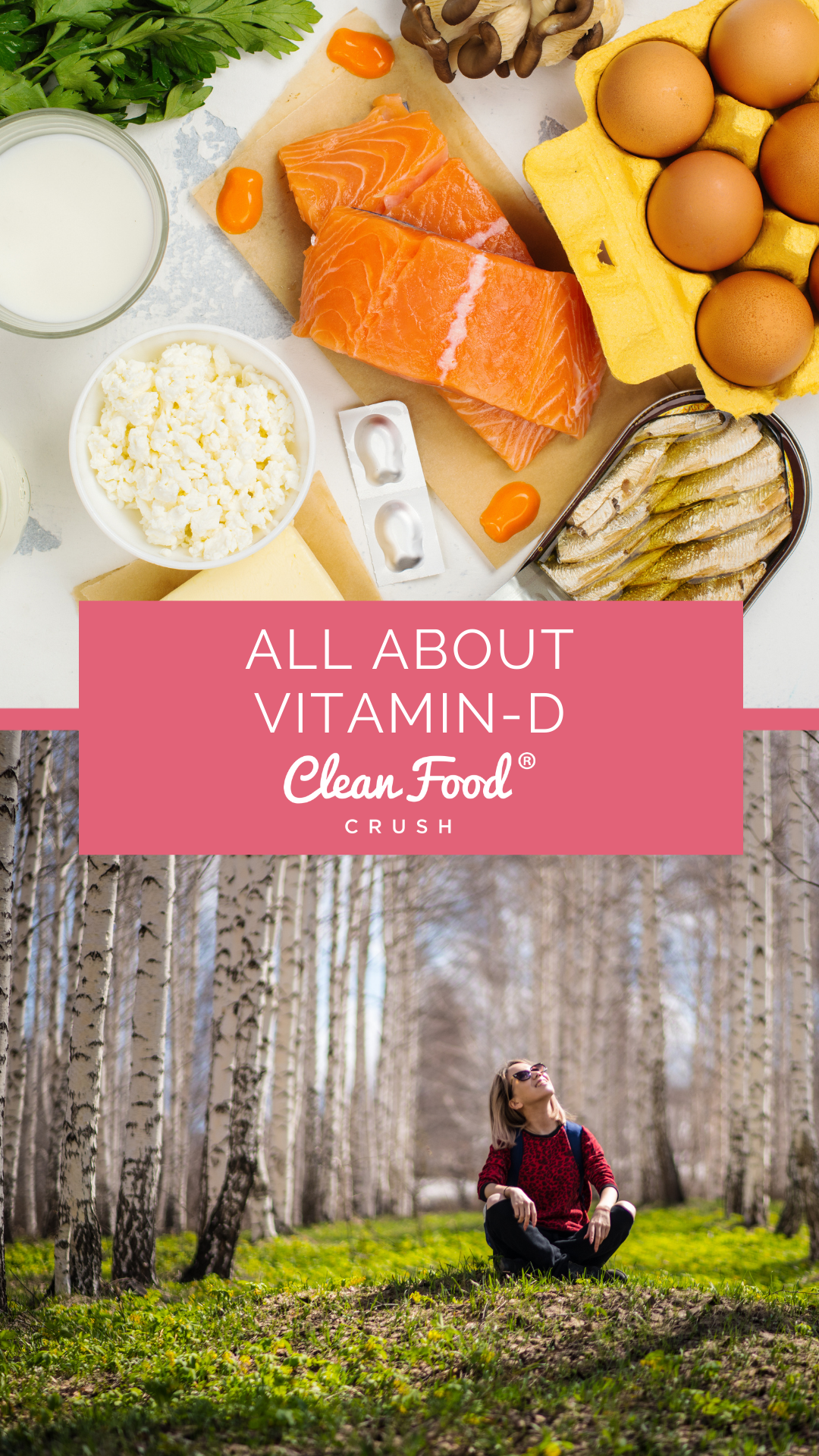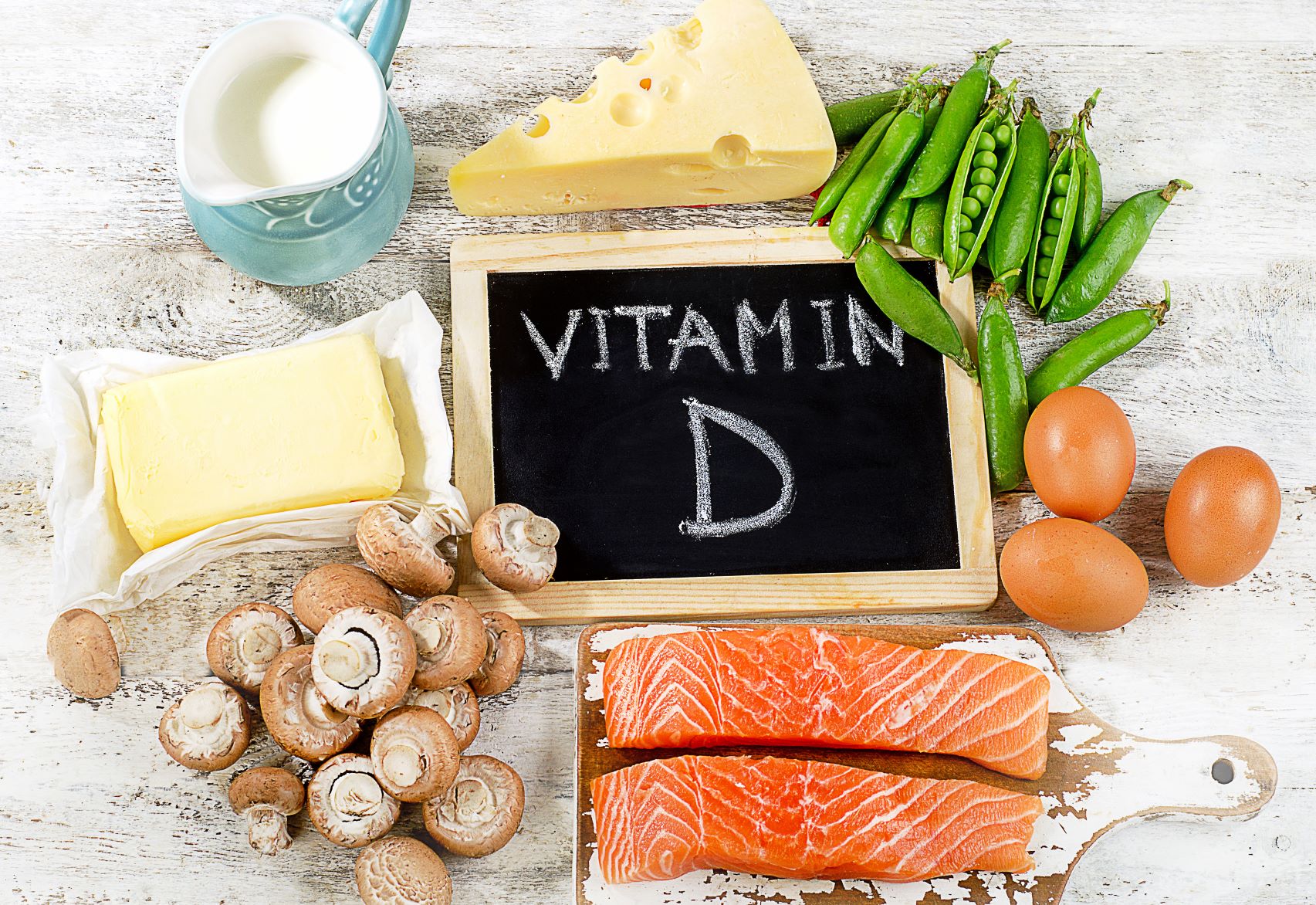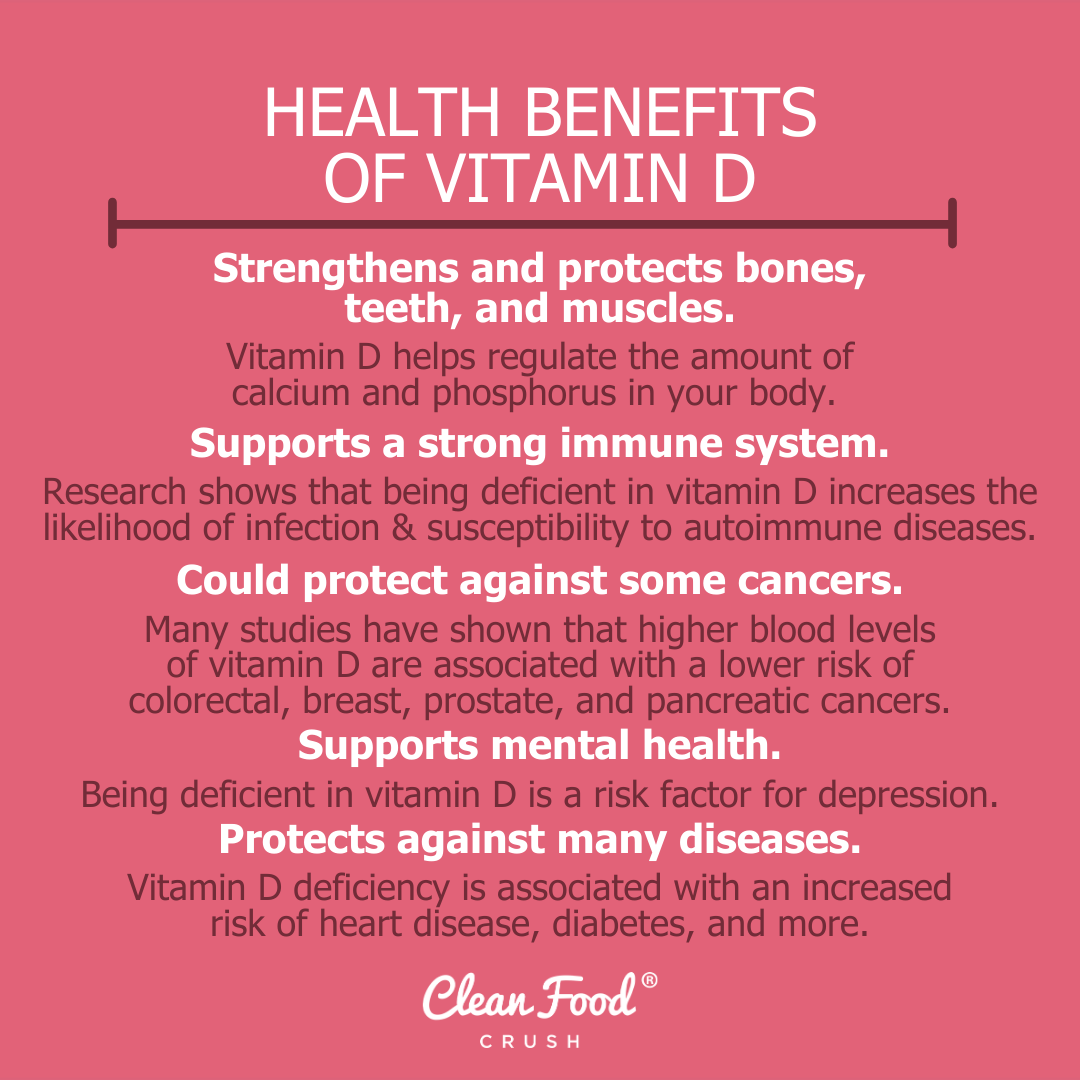

Vitamin D: Why it’s So Important and How You Can Get It
Vitamin D may or may not be on your radar when it comes to your health, but it should be. Emerging research on vitamin D has shown that it has health benefits beyond what was originally known, and having a deficiency in it is linked to a number of significant health issues. Read on to learn more about this crucial vitamin including how it benefits you, how much you need, and how to get enough of it.

What is Vitamin D and how much do you need?
Vitamin D, also called calciferol, is a fat-soluble vitamin. This means that it needs fat in order to dissolve and be absorbed into the body, and it is stored in the body’s fat tissues as well as the liver.
Vitamin D can be measured both in international units (IU) as well as micrograms (mcg), and 1 mcg is equivalent to 40 IU. The recommended dietary allowance (RDA) for vitamin D is as follows:
| Age | Male | Female | Pregnancy | Lactation |
| 0-12 months | 10 mcg (400 IU) | 10 mcg (400 IU) | ||
| 1-13 years | 15 mcg (600 IU) | 15 mcg (600 IU) | ||
| 14-18 years | 15 mcg (600 IU) | 15 mcg (600 IU) | 15 mcg (600 IU) | 15 mcg (600 IU) |
| 19-50 years | 15 mcg (600 IU) | 15 mcg (600 IU) | 15 mcg (600 IU) | 15mcg (600 IU) |
| 51-70 years | 15 mcg (600 IU) | 15 mcg (600 IU) | ||
| 71 + years | 20 mcg (800 IU) | 20 mcg (800 IU) |
It is a good idea to have your blood vitamin D levels checked on a semi-regular basis. While blood levels between 20-40 ng/mL are considered adequate by many health professionals, levels of 50 or above may be associated with even more health benefits. Levels less than 20 are considered deficient.

Health benefits of Vitamin D
Having adequate levels of vitamin D is important for a wide variety of bodily functions, including:
- Strengthening and protecting bones, teeth, and muscles. Vitamin D helps regulate the amount of calcium and phosphorus in your body which supports each of these things. Being deficient in vitamin D can lead to a bone deformation condition called rickets in young children, and to osteomalacia and osteoporosis in adults.
- Supporting a strong immune system. Vitamin D supports a normal immune response. Research shows that being deficient in vitamin D increases the likelihood of infection and susceptibility to autoimmune diseases like multiple sclerosis and lupus.

Did You Know Mushrooms Are Loaded With Vitamin B and D and Can Help Protect Against Cancer?
- Possibly protecting against some cancers. Many studies have shown that higher blood levels of vitamin D are associated with a lower risk of colorectal, breast, prostate, and pancreatic cancers. However, more research is needed.
- Helping protect against many diseases. Vitamin D deficiency is associated with an increased risk of heart disease, diabetes, and more.
- Supporting mental health. Being deficient in vitamin D is a risk factor for depression, and some studies show that supplementing with vitamin D may improve symptoms. In addition, low levels of this vitamin are associated with greater likelihood of cognitive decline, dementia and Alzheimer’s disease.

How to get enough Vitamin D
Unfortunately, it is estimated that up to 1 billion people worldwide are deficient in vitamin D, and most Americans receive less than the recommended amounts. People at most risk of not getting enough vitamin D include the elderly, adolescents, people who are obese, menopausal women, and those with chronic diseases. Making sure you get enough of this crucial vitamin is super important in order to receive the health benefits described above.
There are 3 main ways to obtain vitamin D:
- Sunlight. Your body can make vitamin D from exposure to sunlight, and it is even often referred to as the “sunshine vitamin”. While this is true, you may be surprised to hear that it is not a reliable source of the vitamin. This is because things like clothing, cloudy weather, and sunscreen all block the production of vitamin D from the sun, and certain skin types need more sunlight exposure than others. In addition, since prolonged sun exposure is also a risk factor for skin cancer, the American Cancer Society does not recommend relying on sun exposure to meet your needs.

Check out our Guide to Getting Outside This Winter for ways to get some Vitamin D
- Food. Unlike other vitamins, very few foods naturally supply vitamin D. The few foods that do provide small amounts include egg yolks, mushrooms that have been exposed to sunlight, oily fish such as salmon and sardines, and cod liver oil. Some foods that are commonly fortified with vitamin D include both cow and soymilk, orange juice, and some cereals.
Get Your Vitamin D From this Sweet Chili Baked Salmon. Yum!
- Supplementation. Supplemental vitamin D can come in the form of vitamin D2 or D3. compared to vitamin D2, However, research shows that vitamin D3 is the most effective and usable form to help raise blood levels and support your health. How much vitamin D to supplement with would depend on your blood levels, health status, and lifestyle and should be determined with the guidance of a health professional. If supplementing, remember to take with a meal containing healthy fat to help with absorption.
In Summary
Vitamin D is truly a powerhouse vitamin that is important for so many aspects of health. We recommend having your levels checked if you haven’t done so recently and consider taking action to improve or maintain your levels on a regular basis.

















